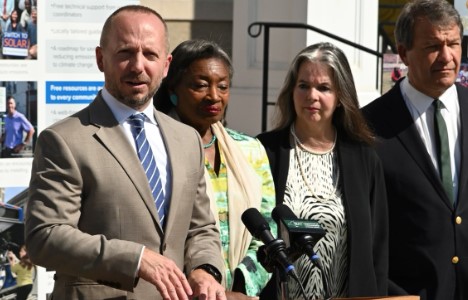
Climate change is here. New York’s comprehensive approach will help ensure the Empire State is prepared.
As made clear by the recent storms that ravaged many Long Island communities, time is running short to comprehensively address the flooding, erosion, and regional economic damage being wrought by increasingly common extreme weather events. We are witnessing the impacts of the climate crisis in real time, both here in New York and across the planet. It’s time for bold action at every level of society.
With the ongoing leadership of Governor Kathy Hochul, New York State is taking sweeping actions to reduce the many sources of greenhouse gas emissions that cause climate change. And in her recent State of the State Address and 2024-25 Executive Budget, Governor Hochul proposed a suite of actions to address climate change’s effects – including $435 million for initiatives to support long-term resiliency projects and protect communities across the state.
The funding will help create a new ‘Resilient & Ready Program’ with resources for low- and moderate-income households experiencing flood damage to assist with necessary repairs in the aftermath of storms, as well as improvements to prevent future damage.
The Governor also proposes a ‘Blue Buffers’ Voluntary Buyout Program to compensate residents in communities most vulnerable to flooding so they can relocate to another area with lesser flood risk. This not only saves taxpayer dollars when inevitable flooding occurs, it spares households the tangible and emotional losses that come with each rising tide and record rainfall.
Supported with $250 million from the $4.2 billion Clean Water, Clean Air and Green Jobs Environmental Bond Act, Blue Buffers would first educate property owners on the benefits of relocating homes and businesses regularly affected by high water, sea-level rise, and storm surges, and then partner with willing sellers on projects that could be eligible for buyouts. Purchased properties then revert to becoming permanently protected as open space, serving as a buffer against future flooding and benefiting the resiliency of the surrounding community.
Building on past investments, Governor Hochul is bolstering New York’s efforts to mitigate the effects of climate change with new proposals to repair aging flood control projects and remove hazard dams. The Governor also directed an update of Coastal Erosion Hazard Area maps essential to the protection of beaches, dunes, and bluffs that maintain and enhance flood resilience, and to overhaul building codes design to create higher standards for resistance to wind, snow, and temperature extremes.
As many Long Islanders know, since Superstorm Sandy, New York aggressively stepped-up efforts to boost targeted investments for critical infrastructure, flood-proofing, shoreline restoration, and disaster response. The response included ongoing work with federal and local partners to use every tool at our disposal.
The recent U.S. Army Corps of Engineers determination of eligibility for the process to assess, fund, and repair their damaged coastal projects on Fire Island, as requested by the Governor and Department of Environmental Conservation (DEC), is welcome news. It is one of many projects that DEC will continue to help implement to protect homes, critical infrastructure, and shorelines.
Climate change is here. With the ongoing cooperation and collaboration of Long Islanders, New York’s comprehensive approach to adaptation and resiliency will help ensure the Empire State is prepared for the gathering storm.
Basil Seggos serves as the New York State Department of Environmental Conservation Commissioner.

